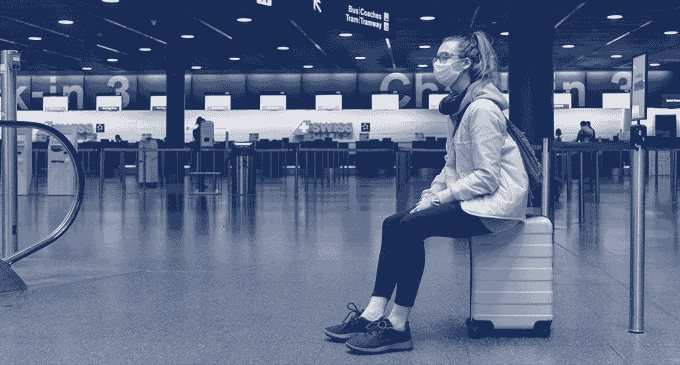What’s Next in the Coronavirus Crisis? Phases of a Crisis and HR Responses
Key Takeaways:
- Four phases of an accident as applied to a crisis.
- HR professionals who address talent, leadership, and organization now are reacting to the present while preparing for the future.

What’s Next in the Coronavirus Crisis? Phases of a Crisis and HR Responses

Are you tired of being tired about the Coronavirus crisis?
The Coronavirus has now been the dominant issue in most of our lives the last 2 to 3 weeks (in the United States; more or less in other countries). We have learned new terms (social distancing, shelter in place, ventilator, pandemic, flatten the curve), experienced unprecedented lifestyle choices (no gathering for shopping, eating out, playing, or worshipping), and felt inevitable personal fears and stresses.
And, we want it all to just be over. We are tired of being tired.
But it is not over. Our lives today are NOT a “new normal” and we will eventually return to work, social engagements, and other activities we did before this crisis.
It helps us move forward by offering a perspective on the phases of this crisis using an accident as a metaphor, then reviewing how HR issues around talent, leadership, and organization can be addressed by business leaders, HR professionals, and individuals themselves.
Phases of an Accident and This Crisis
The figure below lays our four phases of an accident or emergency that may apply to the present coronavirus crisis.

Phase 1: Accident with First Aid/First Responder.
An accident happens, requiring immediate first aid and emergency triage. Emotions are high, the environment is chaotic and confusing, and very first responders react quickly mostly on instinct more than training to do damage control, “stop the bleeding,” and make the injured comfortable. This has been the state of the pandemic for the last few weeks.
Phase 2: Ambulance with Transition.
An ambulance with paramedics arrives to transport the accident victim. While in the ambulance transition state, the paramedics give the injured emotional support (“you are going to be ok”), do more diagnoses (“why are you bleeding?”), and alert others to prepare to receive the injured. In this pandemic crisis, some organizations are now transitioning into emotional well being period, doing diagnoses as to what has to be done to move ahead, and sourcing support.
Phase 3: Hospital with Expert Care.
The accident victim enters the hospital and is now in the hands of experts who do more thorough diagnostic and offer treatment solutions to help the injured heal. In the virus pandemic, organizations require wise investments around processes like customer interface, strategic choices, resource allocation, culture, and talent to offer solutions for organizations and individuals.
Phase 4: Home to Embed a New Normal.
The accident victim returns home to a new normal that might mean accepting a new identity (e.g., if injured loses a limb) or to adapt insights from the accident to their current circumstances (e.g., to better care for their body). The “new normal” from this virus (perhaps months away) may include identity and insights that vary by organization and personal circumstance.
HR Issues Around Talent, Leadership, and Organization
Human Resource (HR) outcomes may be classified into improving talent (workforce, people, individual competencies), organization (workplace, culture, organization capabilities), and leadership (leaders at all levels). These HR deliverables are critical elements of any business success. They are owned by line managers who are ultimately accountable and responsible for them and advised by HR professionals who act as architects to facilitate and design solutions.
Let me suggest and identify specific actions that can be taken around talent, leadership, and organization for each of the four phases of an accident, or this present crisis (see Figure 2). The proposed actions in each of the cells for talent, leadership, and organization columns are indicative (many other actions could be taken), but they help identify how to respond to today’s phase and anticipate the next phase of the crisis.
For talent (workforce) the 4 phases indicate how employees move from the shock and stresses of working at home with required social distancing through to a new level of competencies and commitments.
For individual leaders (and shared leadership), the 4 phases help the leader better recognize how personal actions reflect core values and organization values shape personal actions. As leaders evolve their personal brand and establish the organization’s leadership brand, they ensure that leadership at all levels makes a difference.
For organization (workplace, culture, capability) the 4 phases help navigate the paradoxes of reacting by managing costs AND responding to customer requirements, of caring for personal needs AND creating a competitive organization, of being bold in the short term AND creative and adaptive in the long term, etc.

Implications of Understanding Crisis Phases and HR Deliverables
Many feel tired of the demands of the Coronavirus but are not sure where to go next, for themselves as individuals or for their organizations. Recognizing the accident phases offers a roadmap for the journey ahead. By defining the talent, leadership, and organizational implications of the journey ahead, business and HR leaders can react to the present AND prepare for the future.
Many are saying that we are now in the “new normal” and “reset”. I disagree. The accident, ambulance, and hospital phases are NOT normal (we will not practice social distancing forever). The ambulance (transition), hospital (expertise) phases are important stages to getting to a new normal. And, the “new normal” of identity and adapted insights will vary dramatically by person and organization.
Finally, we need to look back to review what has happened to appreciate resilience, grit, and learning. But, we need to look forward to anticipating what can be so that we can envision opportunity, celebrate success, and savor progress.
Even while in the middle of this evolving crisis, the best is yet to come!
RBL has detailed steps your leaders can take to come out stronger post-Coronavirus. Contact us for specific solutions.


